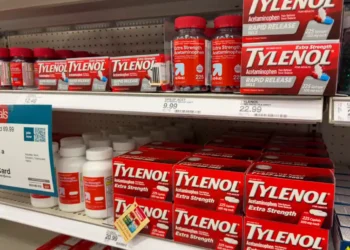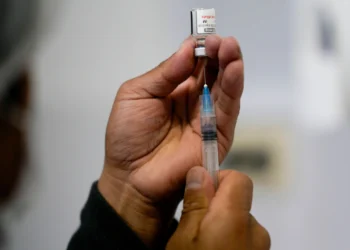Whooping Cough Cases Are Surging: Here’s What You Need to Know to Stay Safe
Whooping cough is making a troubling comeback across the U.S., with nearly 6,600 cases already recorded this year — almost four times higher than this time last year. In 2024 alone, more than 35,000 cases were reported, resulting in 10 deaths, including six infants under one year old.
With infections rising sharply, many are wondering: What is whooping cough? How can you protect yourself and your loved ones, especially young children? And why are cases suddenly spiking?
To help answer these questions, CNN spoke with Dr. Leana Wen, a physician and public health expert, for a clear breakdown.
What Is Whooping Cough?
Whooping cough — or pertussis — is a highly contagious bacterial infection caused by Bordetella pertussis. It spreads through coughing, sneezing, or close contact — especially risky for infants, who can be exposed simply by being held.
Recognizing the Symptoms
Pertussis often starts like a mild cold with symptoms such as:
- Low-grade fever
- Runny nose
- Mild cough
But things can escalate fast. The cough may become severe and violent, often ending in a high-pitched “whoop” as the person gasps for breath. Coughing fits can cause vomiting, disrupt sleep, and even break ribs in extreme cases.
For infants, whooping cough is particularly dangerous:
- 1 in 3 babies with pertussis are hospitalized
- 1 in 5 of those hospitalized develop pneumonia
- 1 in 50 experience convulsions
- 1 in 100 may die from complications
People with asthma or weakened immune systems are also at greater risk.
How It’s Diagnosed and Treated
Pertussis is diagnosed through symptoms or a nose and throat swab. Once diagnosed, early treatment with antibiotics — like azithromycin or clarithromycin — can reduce symptoms and shorten the contagious period.
Without treatment, a person can spread pertussis for up to two weeks after their cough begins.
Vaccines: Your Best Defense
There are two vaccines that protect against whooping cough:
- DTaP (for infants and young children)
- Tdap (for adolescents, adults, and pregnant women)
Recommended Vaccine Schedule:
- DTaP: 5 doses at 2, 4, 6, 15–18 months, and 4–6 years
- Tdap: One dose at ages 11–12
- Adults: One Tdap if never received, then a booster every 10 years
- Pregnant Women: One Tdap between 27–36 weeks each pregnancy
Vaccination doesn’t just protect you — it helps shield vulnerable groups like newborns who aren’t fully immunized yet.
Why Are Cases Increasing?
Experts believe the spike may be due to a combination of:
- Reduced exposure during the COVID-19 pandemic, which lowered natural immunity
- Falling childhood vaccination rates, a trend public health officials are urging families to reverse
- Delayed post-pandemic catch-up immunizations
How to Protect Yourself and Others
If someone in your household has whooping cough:
- Everyone in the household should take antibiotics within 21 days, even if they show no symptoms
- Practice frequent handwashing and limit contact
- Stay up to date with vaccinations
- See a doctor early if symptoms begin
This preventative approach — known as post-exposure prophylaxis — helps stop the spread before symptoms start.
The Bottom Line
With whooping cough cases climbing quickly, taking action now is key. Vaccinate, stay alert to symptoms, and don’t delay treatment. For parents, caregivers, and vulnerable individuals, a little awareness could make a life-saving difference.
This article was rewritten by JournosNews.com based on verified reporting from trusted sources. The content has been independently reviewed, fact-checked, and edited for accuracy, neutrality, tone, and global readability in accordance with Google News and AdSense standards.
All opinions, quotes, or statements from contributors, experts, or sourced organizations do not necessarily reflect the views of JournosNews.com. JournosNews.com maintains full editorial independence from any external funders, sponsors, or organizations.
Stay informed with JournosNews.com — your trusted source for verified global reporting and in-depth analysis. Follow us on Google News, BlueSky, and X for real-time updates.












